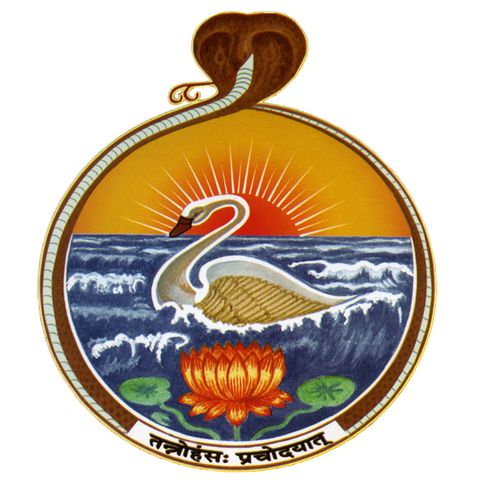84 - Attaining Liberation While Living | Swami Tattwamayananda

Download and listen anywhere
Download your favorite episodes and enjoy them, wherever you are! Sign up or log in now to access offline listening.
Description
-8th chapter: verses 26, 27, 28 -The lecture was given by Swami Tattwamayananda on May 28, 2021. -To properly understand the 28th verse, we need to understand the context of...
show more-The lecture was given by Swami Tattwamayananda on May 28, 2021.
-To properly understand the 28th verse, we need to understand the context of the 8th chapter, which starts with seven questions from Arjuna. He asks: “What is Brahman? What is Adhyatma? What is Karma? What is Adhibhuta? What is Adhidaiva? Who and in what way is Adhiyajna present in the human body? How are You known at the time of death by those practicing spiritual disciplines?
-In answer, Lord Krishna says: Aksharam(Brahman) - as the imperishable, indestructible, impersonal, unmanifest reality - is the supreme truth. Its presence in every human being is called Adhyatma. The vibration of this potentiality into creative and evolutionary activities is called Karma. What is perishable – comes into existence and later disappears – is Adhibhutam. The reflection of the supreme reality in the human body is Adhidaivam. The supreme reality itself is Adhiyajna, as the cause of evolutionary activity and sustenance of the universe. Those who remember Me alone at the time of death, they attain Me.
-Lord Krishna then discusses the two spiritual paths that Yogis take upon departing from this body.
-Yogis of the highest type, who lead a pure life and are free from selfish desires, follow the bright path of Shuklagati or Devayana. It is the path of fire, flame, daytime, the bright fortnight, and the six months of the northern passage of the sun - departing by this path the knowers of Brahmanattain Brahman. Bhishma in Mahabharata decided his time of death, to take this path.
-Yogis whose spiritual practices are driven by a motive, follow the dark path of Krishnagati or Pitrayana. It is the path of smoke, nighttime, dark fortnight, and the six months of the southern passage of the sun – departing by this path, the Yogi reaches a higher abode, but returns to Samsara.
-We find two types of teachings in Hindu scriptures. First type of teaching is linked to belief systems of ancient India – some of them are not easily intelligible in this modern age. Second type of teaching is very universal and rational. It says that there is a divine reality present in all of us. If we live a pure life and practice Yamas and Niyamas and other spiritual disciplines we can manifest this divinity within us.
-In the 28th verse, Lord Krishna brings it all together and says that those who know the answers to these seven questions and understand the mystery of the twofold departure paths, they get the transcendental knowledge and they attain the ultimate liberation even while living in this world.
-26th verse: “These are two paths - one bright and the other dark. One takes the Yogi beyond the trans migratory cycle. The other keeps him confined to the trans migratory cycle.”
-27th verse: “A Yogi who knows the secrets of these two paths, is not deluded. Therefore, we should always be steadfast in Yoga, staying linked to a higher spiritual ideal.”
-Even if the Yogi is not in the path of Shuklagati, he does not feel lost. He is not worried about his fate and he feels secured. He knows that he will be reborn in a family where he can continue his spiritual journey.
-According to Gita, everyone has a path to liberation. Nothing is ever lost, and we are never late – we can start our spiritual journey right now. Gita puts the responsibility on us and says that we can build our own spiritual destiny.
-28th verse: “The Yogi who understands the full meaning of the seven questions and understands the mystery of the twofold departure paths – he becomes a Jivan mukta. He gets liberated while living in this world, realizes the supreme truth, and gets results that transcend the collective meritorious results of all the ancient Vedic rituals.”
-Such a Jivan mukta realizes his true spiritual identity as the Atman. He looks upon life from a higher perspective and is not disturbed by the ups and downs of life. He experiences spiritual oneness with the whole existence. Some of the greatest men of action, such as Shankaracharya and Swami Vivekananda, were Jivan muktas.
-Vyadha became a jivan mukta through his spiritual practices. Upon attaining the highest realization, he did not give up his profession as a butcher. He continued his secular activities, fully established in his true spiritual identity. His dialog with another saint constitutes Vyadha Gita.
Information
| Author | Vedanta Society, San Francisco |
| Organization | Vedanta Society, San Francisco |
| Website | - |
| Tags |
Copyright 2024 - Spreaker Inc. an iHeartMedia Company
